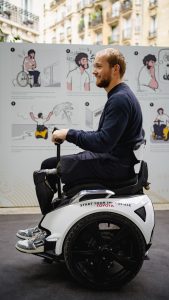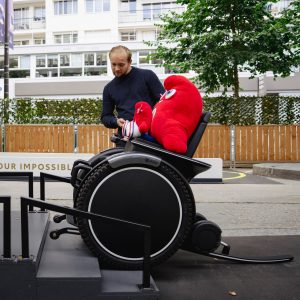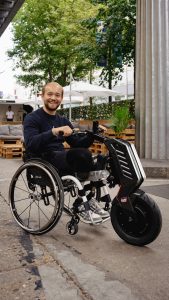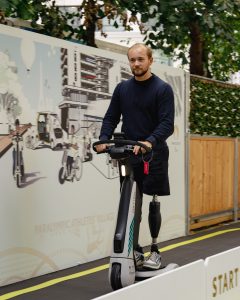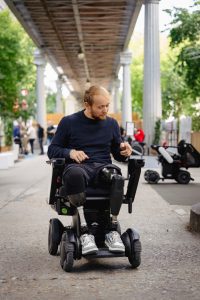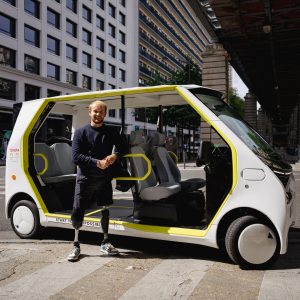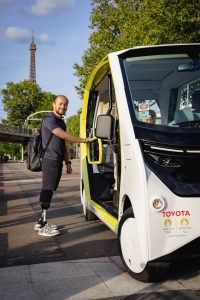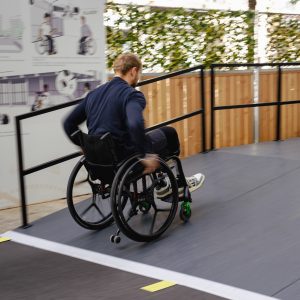Billy Monger Puts Toyota’s Paralympic Mobility Vehicles to the Test
Ahead of the opening ceremony of the Paralympic Games Paris 2024, Billy Monger, the TV presenter and racing driver, has visited the Inclusive Mobility Park to trial a range of Toyota’s mobility solutions. These will be used over the course of the Games, to ensure ease of movement around Paris for Paralympians, spectators and officials with mobility needs. The range included concept mobility vehicles for individuals and groups, such as Accessible People Movers, wheelchair pullers that can reach speeds of up to 40kmh and wheelchairs that can drive autonomously or even climb stairs.
The aim of the Mobility Park is for Toyota to promote inclusive mobility for all – its vision as it transitions to become a mobility company. In total, Toyota is providing 700 personal last-mile mobility products to ensure that athletes, volunteers and organisers have access to the most inclusive and sustainable mobility fleet ever seen at the Olympic and Paralympic games Paris 2024.
The mobility vehicles Billy Monger trialled included concepts from companies supported by Toyota Open Labs, an open innovation platform that brings together startups with business units across the Toyota ecosystem, to help shape the future of mobility:
Yosh-E
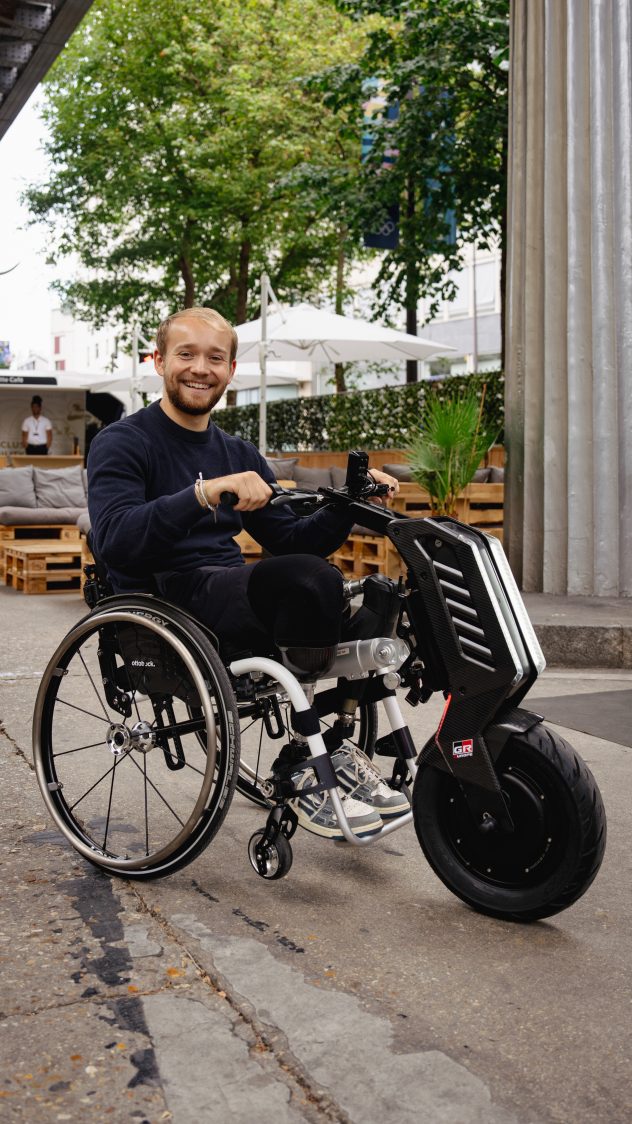
A third wheel electric puller for manual wheelchairs co-developed by Toyota and Austrian company Klaxon, the Yosh-E, clips onto the front of a manual wheelchair, converting it into a battery-powered electric vehicle, giving more freedom to move. Around 200 Yoshi-E pullers will be attached to wheelchairs during the Paralympic Games Paris 2024 and 150 will be used during the opening ceremony.
Monger commented: “In previous Paralympic Games lots of the athletes didn’t go to the opening ceremony as they didn’t want to risk tiring themselves out, so devices like this mean they can attend without worrying – a bit like saving your legs a couple of days before a marathon.”
Max speed: 5mph
Range: 25km, rechargeable in 3.5 hours.
A GR (Gazoo Racing) version of Yosh-E was inspired by the tech innovation used in the prosthetic leg of South African shot putter and Toyota engineer, Tyrone Pillay. The prosthetic was specially designed to withstand the torque and force when hurling the shot put. Seeking a new use for the technology, the team based at Toyota in Cologne applied the tech to the GR Yosh-E. The Toyota development team included an engineer with only 20% vision, one with paralysis on one side of his body and another with an amputation above the knee – so they all understood the needs of someone who is in a wheelchair.
No stranger to speed, Monger quickly mastered the GR Yosh-E.
C+ Walk
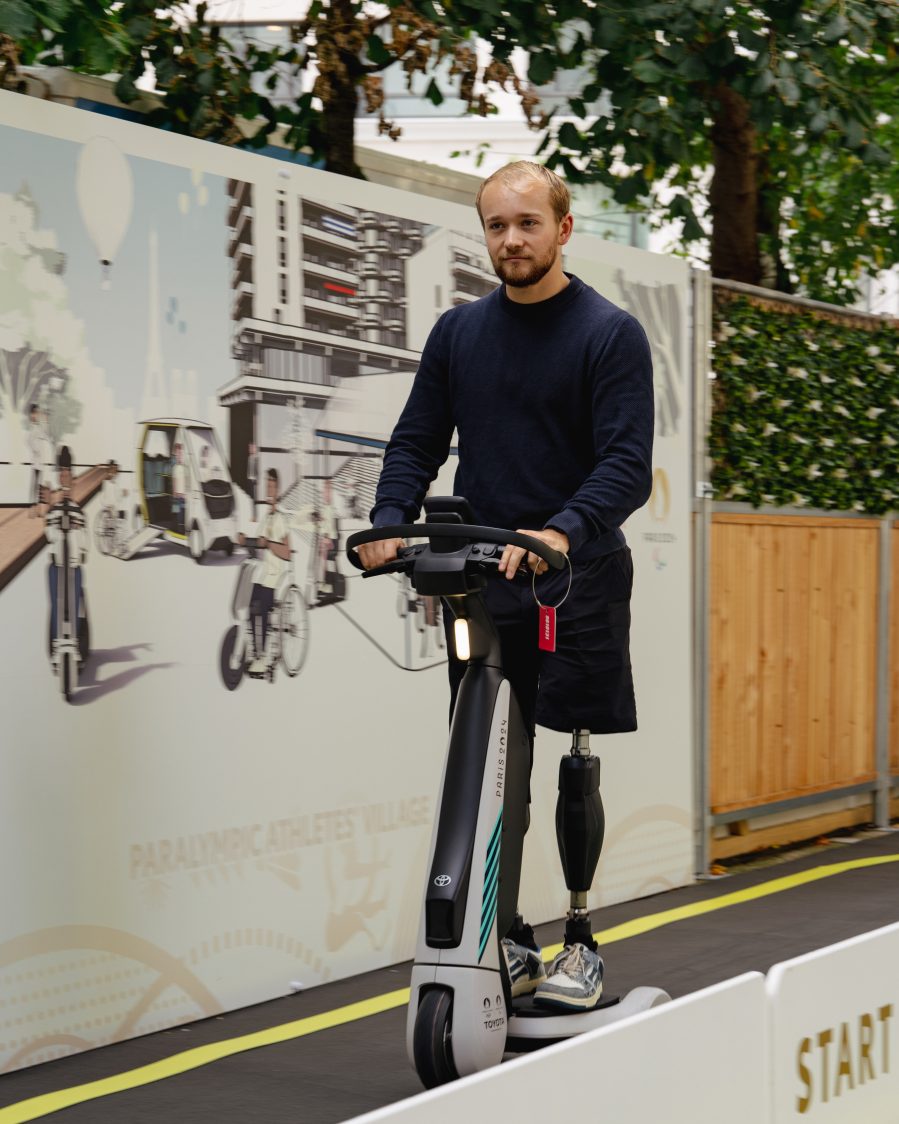
An easy to operate 100% battery electric three-wheeled vehicle designed to be used in walking areas and available in either a standing or seated format. During the Paralympic opening ceremony, a total of 40 C+ Walk vehicles will be used.
Max speed: 3.7–6 mph
Range: 6-8.6 miles; chargeable in 2.5 hours
Genny
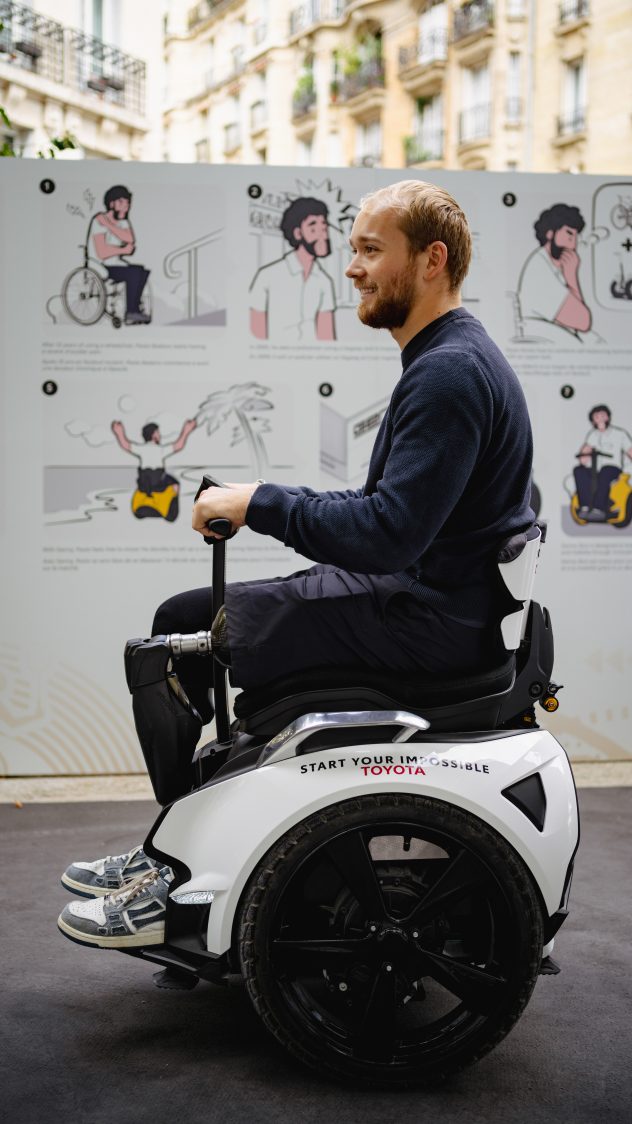
A self-balancing personal battery electric transporter that empowers people with reduced mobility to move freely. It sets a new benchmark in micro-mobility, moving beyond traditional four-wheeled vehicles.
Max speed: 9mph
Range: 15 miles; chargeable in 8 hours
Monger said: “This is really clever and really intuitive, as you lean your upper body forwards to make the Genny move, back to brake and lean left or right to steer. Once you’ve got the hang of it, it’s really fun and agile.”
Eppur
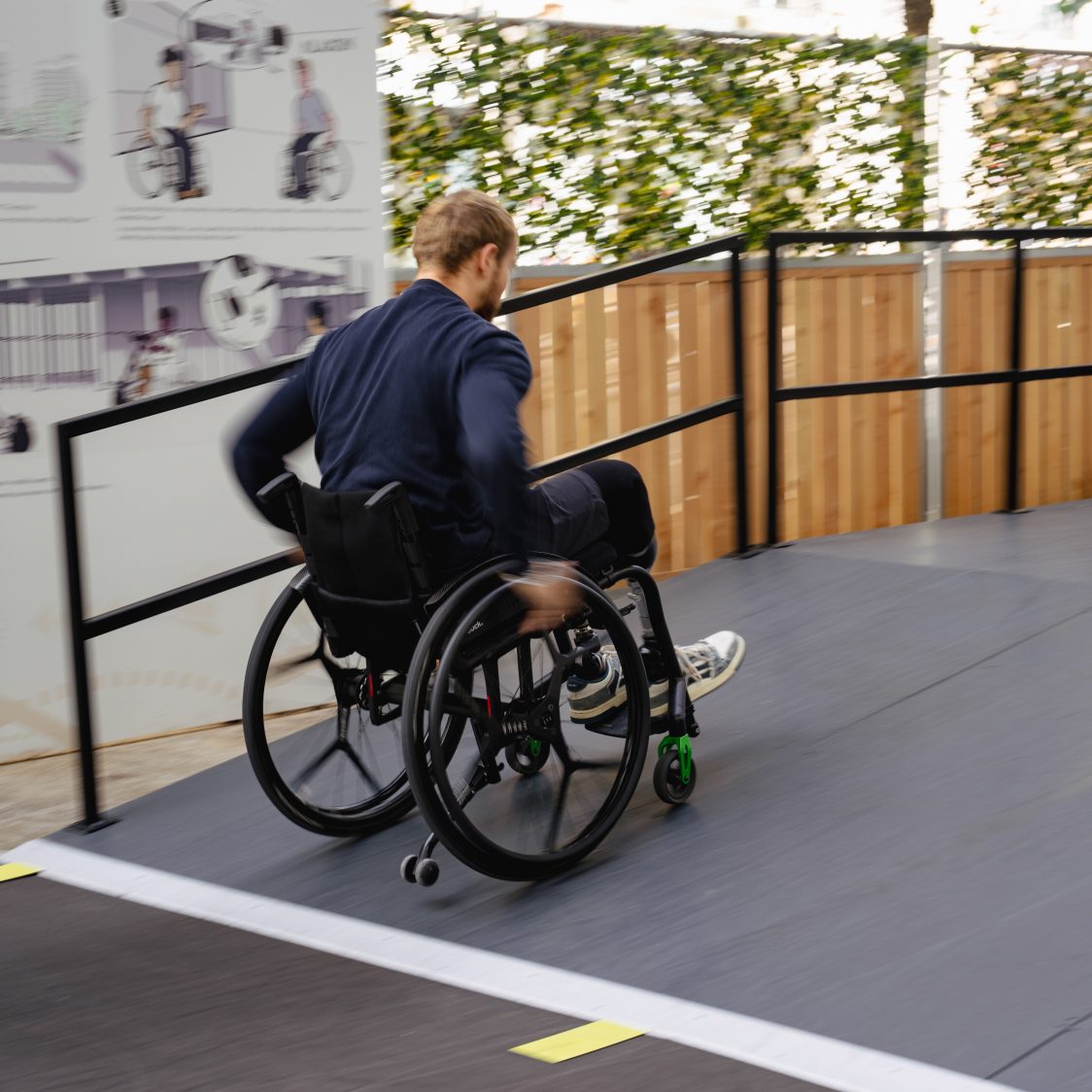
Eppur, a first, is a braking system for manual wheelchairs which reduces the user’s braking effort by 80%. Instead of using the friction of their hands against the wheelchair wheels to slow down or stop, light pressure is applied to the outer rim, which applies a brake. The wheels are compatible with many different types of wheelchair.
Klaxon Twist is a versatile propulsion system for wheelchairs, with a small wheel, electric motor, and battery. It can provide extra power when needed, to either pull or push a wheelchair.
Monger tried Eppur on a slope and commented: “this is going to be hugely useful for wheelchair users, especially on slopes or on slippery surfaces such as gravel, reducing the callouses they often get from effectively using their hands as brake pads.”
Toyota Juu

An electric wheelchair prototype from Toyota that can autonomously climb stairs up to 16cm in depth while the user is seated, the Toyota Juu empowers wheelchair users to explore previously inaccessible places, unlocking new possibilities in independent mobility.
Max speed: 3.7mph
Whill
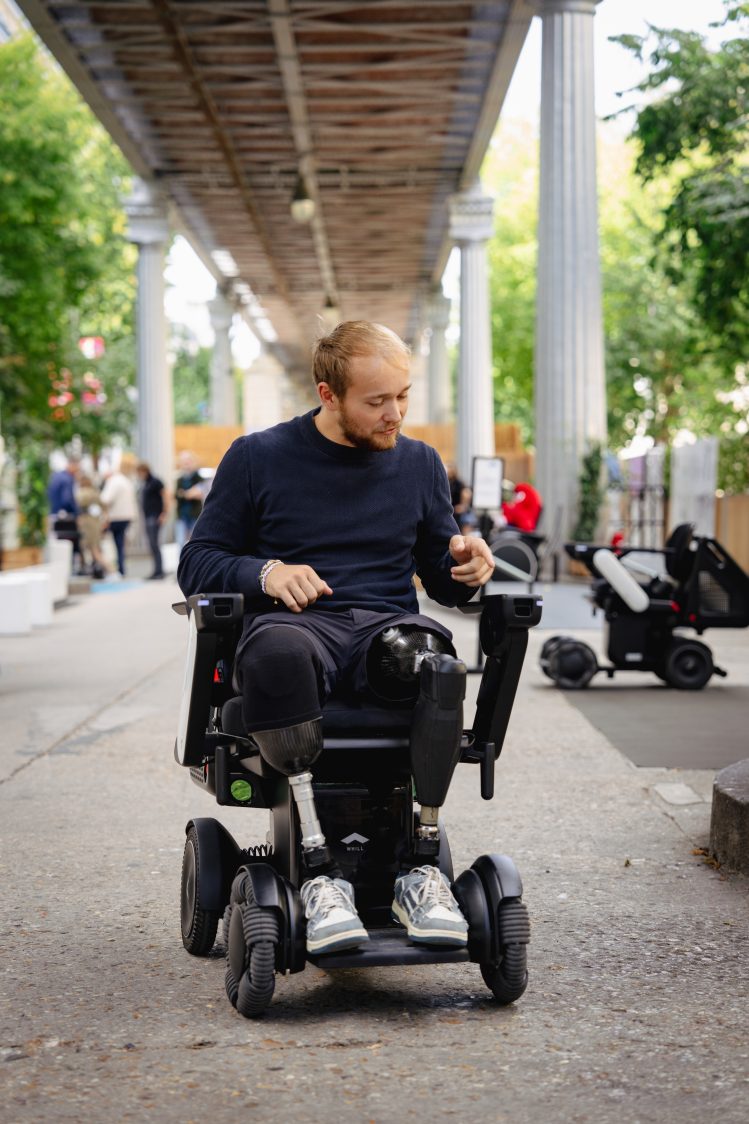
This is a last mile electric wheelchair supported by Woven Capital, the $800m investment arm of Toyota Motor Corporation, designed to autonomously transport those with mobility needs around airports, hospitals, and the Paralympic Games. A total of 11 different commercial projects using Whill are currently underway.
Monger tested the controls: “Once you see it is connecting on the control panel, it pops up with the location it’s going to take you to, you confirm that you want to go and shortly you’re on your way without doing anything, hands are off!”
Accessible People Mover (APM)

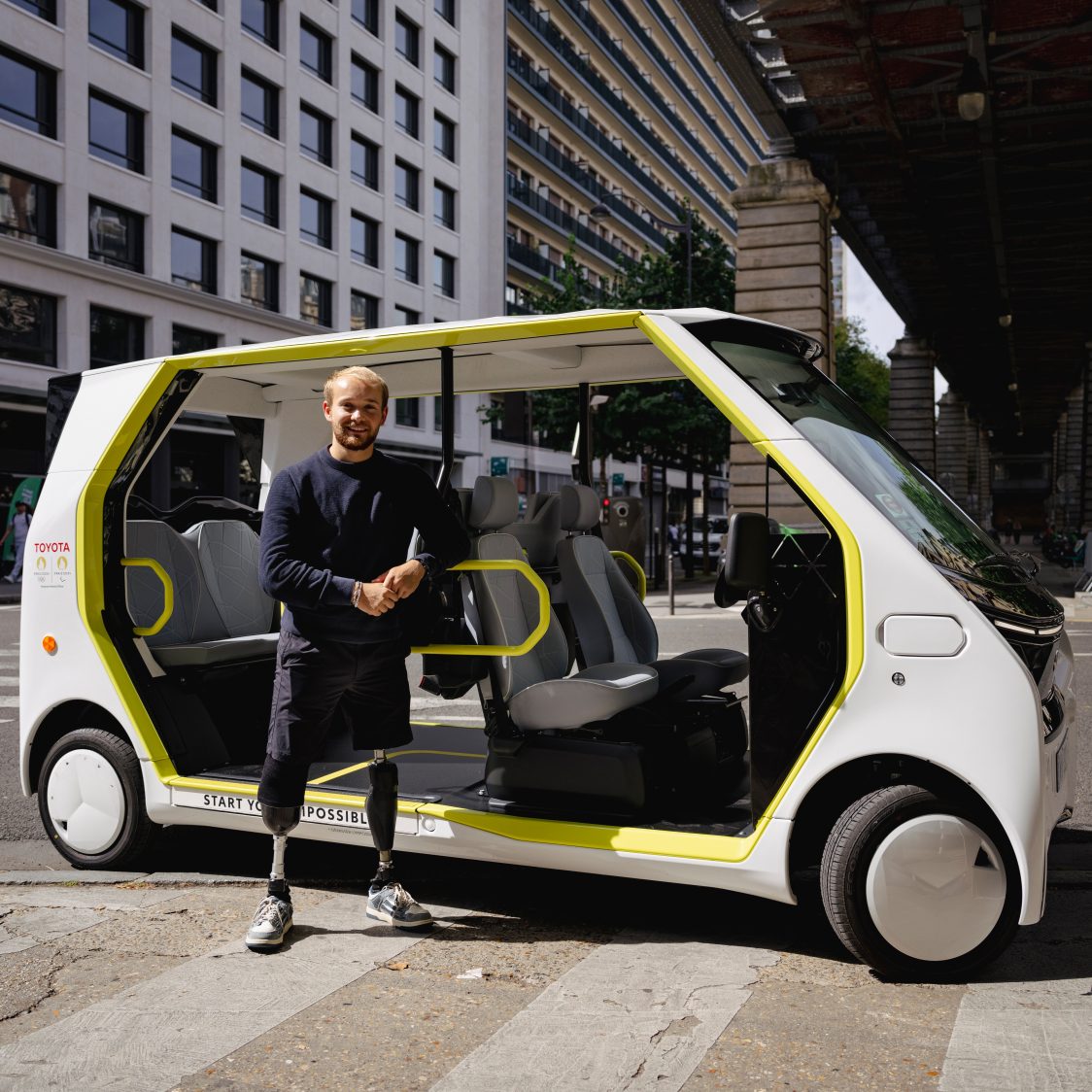
This electric vehicle is accessible for wheelchair users and those with mobility needs, and a total of 250 APMs are being used to transport athletes and supporters in and around the Athlete’s Village and competition sites in Paris. The vehicle can seat up to six people including the driver and can be modified to accommodate wheelchair users.
Max speed: 11.8mph
Range: 62 miles
Monger commented on the Inclusive Mobility Park: “It was very interesting for me to see the different mobility devices, which are all unique in their own way. Initially, some were more challenging to get the hang of than others but they were all really impressive. The main thing I took away is the fact that the devices that Toyota is providing for the athletes are really beneficial, as during the opening ceremony there will be moments when the athletes will be reluctant to use energy, as they’ll be saving it for their events. In particular, the Yosh-E wheelchair puller is really useful because it saves their arms of wheelchair athletes for their events and it will be keeping them off their feet. A broader perspective is that if someone is tired or questioning whether to go and see different parts of the city, these devices will enable them to get the full experience of seeing the city of Paris.”
ENDS

